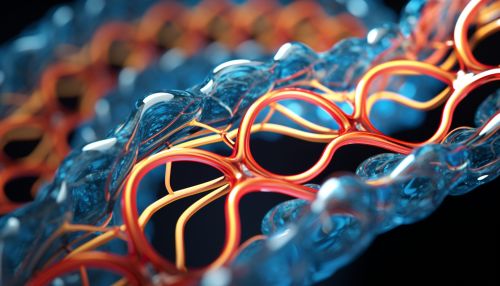Mitochondrial DNA
Overview
Mitochondrial DNA (mtDNA) is a small circular molecule that is found within the mitochondria of eukaryotic cells. Unlike nuclear DNA, which is inherited from both parents and recombined in each generation, mtDNA is inherited solely from the mother. This unique pattern of inheritance allows mtDNA to be used as a powerful tool in evolutionary biology, population genetics, and forensic science.
Structure and Organization
Mitochondrial DNA is a double-stranded, circular molecule that is approximately 16,569 base pairs in length. It contains 37 genes, 13 of which encode proteins involved in the electron transport chain and oxidative phosphorylation. The remaining genes encode transfer RNAs (tRNAs) and ribosomal RNAs (rRNAs) necessary for protein synthesis within the mitochondrion. Unlike nuclear DNA, mtDNA does not contain introns, and very few non-coding regions exist. The most significant non-coding region, known as the D-loop, is involved in the initiation of replication and transcription.


Replication and Transcription
The replication and transcription of mtDNA are carried out by a set of proteins that are encoded by nuclear genes and imported into the mitochondrion. The replication process is asymmetric, with one strand being synthesized continuously (the "heavy" strand) and the other being synthesized discontinuously (the "light" strand). Transcription of mtDNA is polycistronic, meaning that entire strands of DNA are transcribed into long RNA molecules that are then cleaved into individual tRNA, rRNA, and mRNA molecules.
Inheritance and Evolution
Mitochondrial DNA is maternally inherited, meaning it is passed down from mother to offspring without recombination. This allows for the tracing of maternal lineage and the study of population genetics and human evolution. The high mutation rate of mtDNA, along with its lack of recombination, makes it a valuable tool for studying evolutionary relationships among species.
Mitochondrial Diseases
Mutations in mtDNA can lead to a variety of diseases, collectively known as mitochondrial diseases. These diseases can affect any system in the body, but they most commonly cause neurological and muscular symptoms due to the high energy demands of these tissues. Examples of mitochondrial diseases include Leber's hereditary optic neuropathy (LHON) and mitochondrial myopathies.
Mitochondrial DNA in Forensics
In forensic science, mtDNA is used for human identification and kinship testing. Because mtDNA is maternally inherited and does not recombine, it can be used to trace maternal lineage and identify remains by comparing the mtDNA profile to that of maternal relatives. Additionally, because there are many copies of mtDNA in each cell, it is often possible to obtain a mtDNA profile when nuclear DNA is too degraded or insufficient for analysis.
